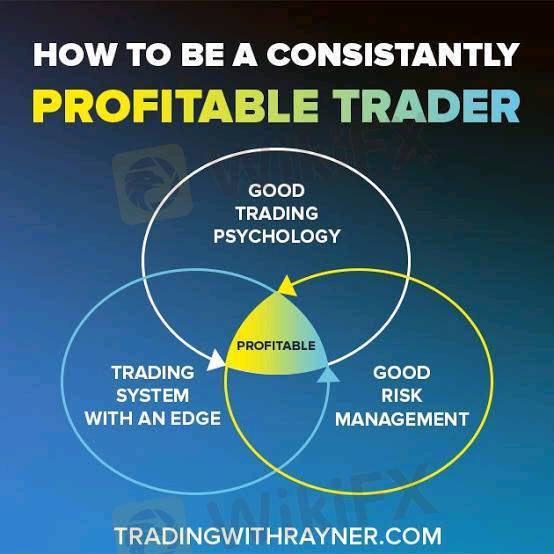
2025-02-18 00:02
Industry Using trading journals for risk assessment.
#forexrisktip
This is for informational purposes only. For medical advice or diagnosis, consult a professional.
Trading journals are a powerful tool for risk assessment. By meticulously recording your trades, you can identify patterns that contribute to losses and adjust your strategy accordingly. Here's how to use a trading journal for risk assessment:
1. Track Key Metrics
* Position Sizing: Record the percentage of your capital risked on each trade. This helps you identify if you're over-leveraging.
* Stop-Loss Levels: Note where you set your stop-loss orders. Analyze if these levels are consistently hit and if they align with your risk tolerance.
* Win Rate and Risk-Reward Ratio: Track your win rate and the average profit compared to the average loss. This helps assess the overall risk-reward profile of your strategy.
* Emotional State: Briefly describe your emotional state before, during, and after each trade. This helps identify emotional biases that might be leading to poor decisions.
2. Analyze Your Data
* Identify Patterns: Look for recurring mistakes. Are you consistently over-leveraging? Do you tend to exit winning trades too early? Are you chasing losses?
* Calculate Risk Metrics: Use your journal data to calculate metrics like maximum drawdown, which measures the largest peak-to-trough decline in your portfolio.
* Backtest Strategies: Use your journal data to backtest different strategies. This helps you understand the historical performance and risk profile of each strategy.
3. Adjust Your Strategy
* Reduce Position Size: If you're consistently over-leveraging, reduce your position size to align with your risk tolerance.
* Refine Stop-Loss Levels: If your stop-loss levels are consistently hit, consider adjusting them based on market volatility and your risk tolerance.
* Improve Risk-Reward Ratio: If your win rate is low or your risk-reward ratio is unfavorable, consider adjusting your entry and exit criteria.
* Manage Emotions: If you notice emotional biases affecting your trading, develop strategies to manage your emotions, such as taking breaks or using mindfulness techniques.
Additional Tips
* Be Honest and Consistent: Record every trade, even the losing ones. The more data you have, the more accurate your analysis will be.
* Use a Trading Journal Template: There are many free trading journal templates available online.
* Consider a Trading Journal Software: Trading journal software can automate some of the data analysis and provide insightful reports.
By using a trading journal for risk assessment, you can gain valuable insights into your trading behavior and make data-driven decisions to improve your performance and manage risk more effectively.
Like 0
FX1616440431
Trader
Hot content
Industry
Event-A comment a day,Keep rewards worthy up to$27
Industry
Nigeria Event Giveaway-Win₦5000 Mobilephone Credit
Industry
Nigeria Event Giveaway-Win ₦2500 MobilePhoneCredit
Industry
South Africa Event-Come&Win 240ZAR Phone Credit
Industry
Nigeria Event-Discuss Forex&Win2500NGN PhoneCredit
Industry
[Nigeria Event]Discuss&win 2500 Naira Phone Credit
Forum category

Platform

Exhibition

Agent

Recruitment

EA

Industry

Market

Index
Using trading journals for risk assessment.
 India | 2025-02-18 00:02
India | 2025-02-18 00:02#forexrisktip
This is for informational purposes only. For medical advice or diagnosis, consult a professional.
Trading journals are a powerful tool for risk assessment. By meticulously recording your trades, you can identify patterns that contribute to losses and adjust your strategy accordingly. Here's how to use a trading journal for risk assessment:
1. Track Key Metrics
* Position Sizing: Record the percentage of your capital risked on each trade. This helps you identify if you're over-leveraging.
* Stop-Loss Levels: Note where you set your stop-loss orders. Analyze if these levels are consistently hit and if they align with your risk tolerance.
* Win Rate and Risk-Reward Ratio: Track your win rate and the average profit compared to the average loss. This helps assess the overall risk-reward profile of your strategy.
* Emotional State: Briefly describe your emotional state before, during, and after each trade. This helps identify emotional biases that might be leading to poor decisions.
2. Analyze Your Data
* Identify Patterns: Look for recurring mistakes. Are you consistently over-leveraging? Do you tend to exit winning trades too early? Are you chasing losses?
* Calculate Risk Metrics: Use your journal data to calculate metrics like maximum drawdown, which measures the largest peak-to-trough decline in your portfolio.
* Backtest Strategies: Use your journal data to backtest different strategies. This helps you understand the historical performance and risk profile of each strategy.
3. Adjust Your Strategy
* Reduce Position Size: If you're consistently over-leveraging, reduce your position size to align with your risk tolerance.
* Refine Stop-Loss Levels: If your stop-loss levels are consistently hit, consider adjusting them based on market volatility and your risk tolerance.
* Improve Risk-Reward Ratio: If your win rate is low or your risk-reward ratio is unfavorable, consider adjusting your entry and exit criteria.
* Manage Emotions: If you notice emotional biases affecting your trading, develop strategies to manage your emotions, such as taking breaks or using mindfulness techniques.
Additional Tips
* Be Honest and Consistent: Record every trade, even the losing ones. The more data you have, the more accurate your analysis will be.
* Use a Trading Journal Template: There are many free trading journal templates available online.
* Consider a Trading Journal Software: Trading journal software can automate some of the data analysis and provide insightful reports.
By using a trading journal for risk assessment, you can gain valuable insights into your trading behavior and make data-driven decisions to improve your performance and manage risk more effectively.
Like 0
I want to comment, too
Submit
0Comments

There is no comment yet. Make the first one.

Submit
There is no comment yet. Make the first one.